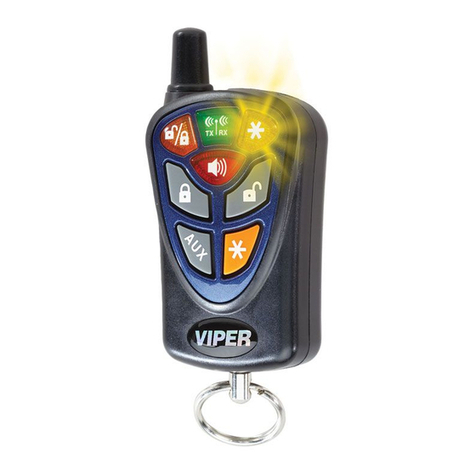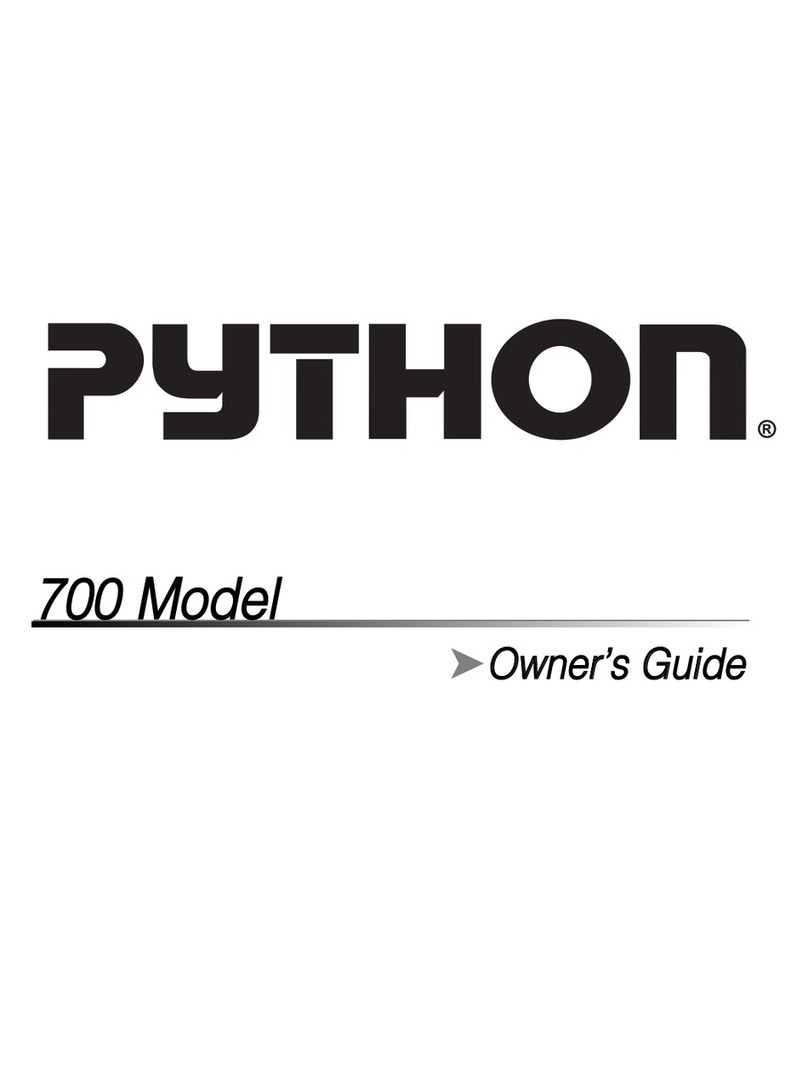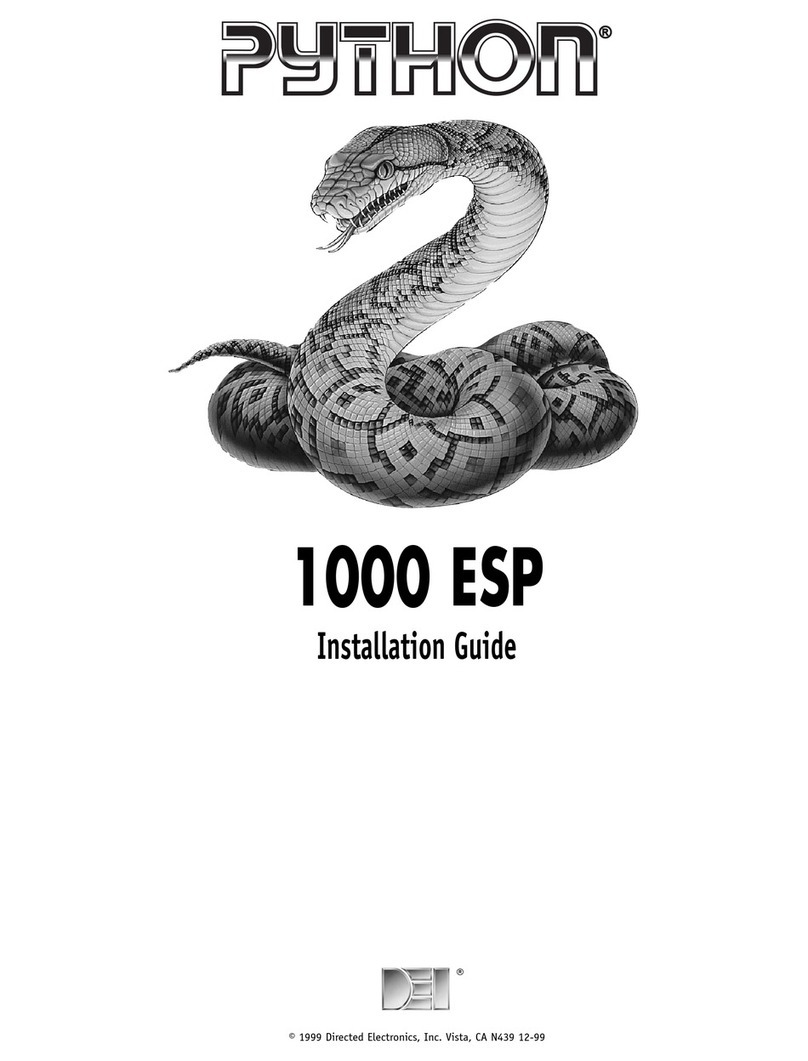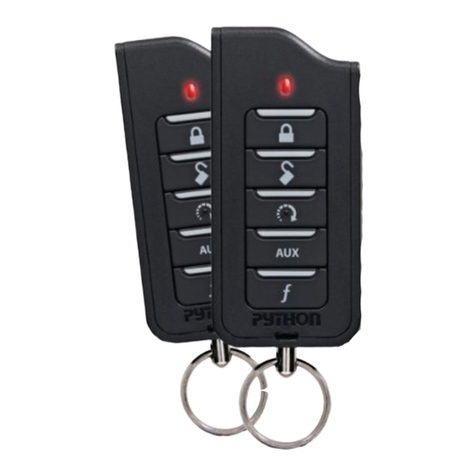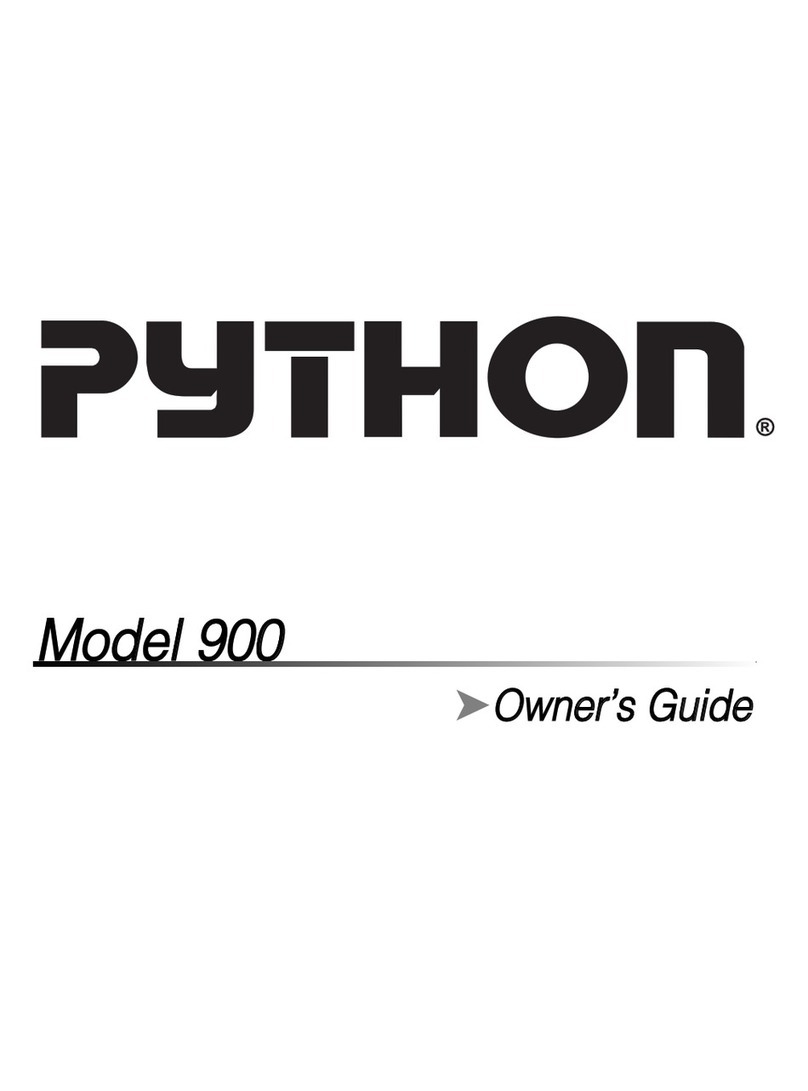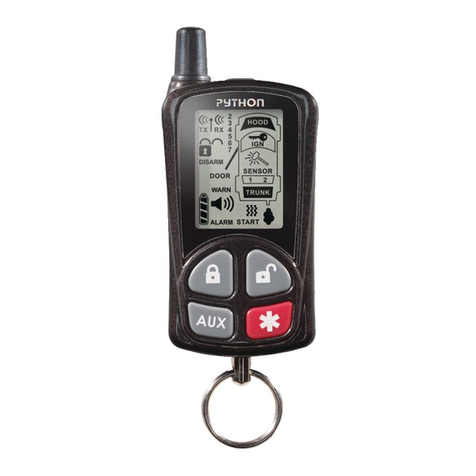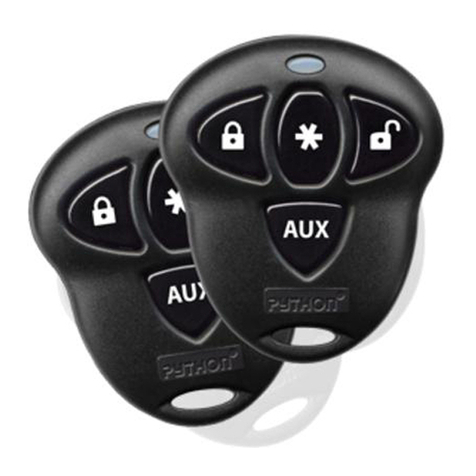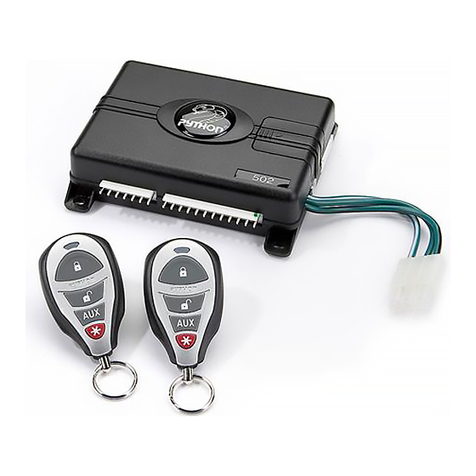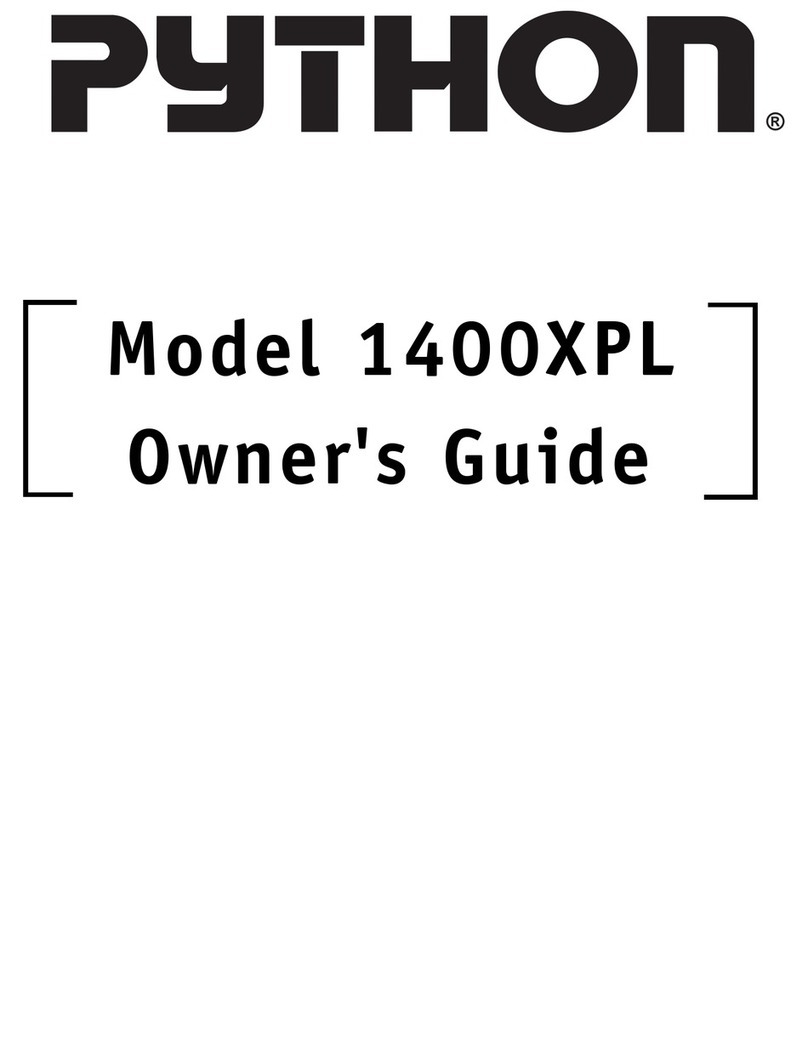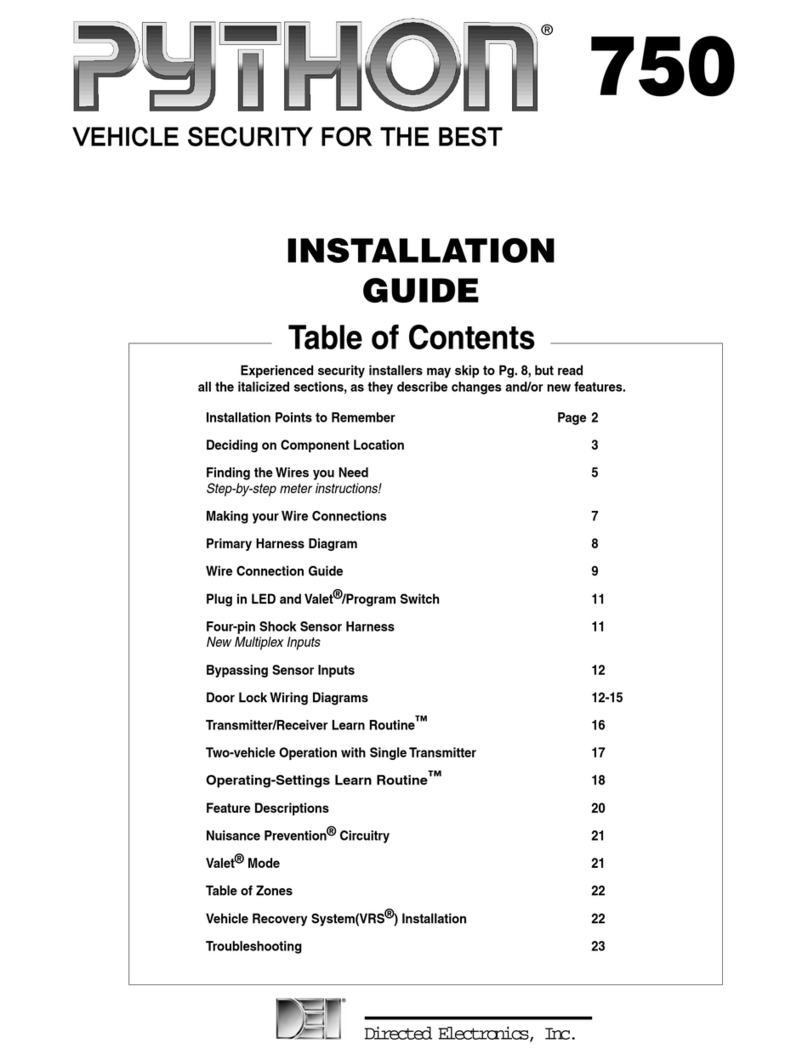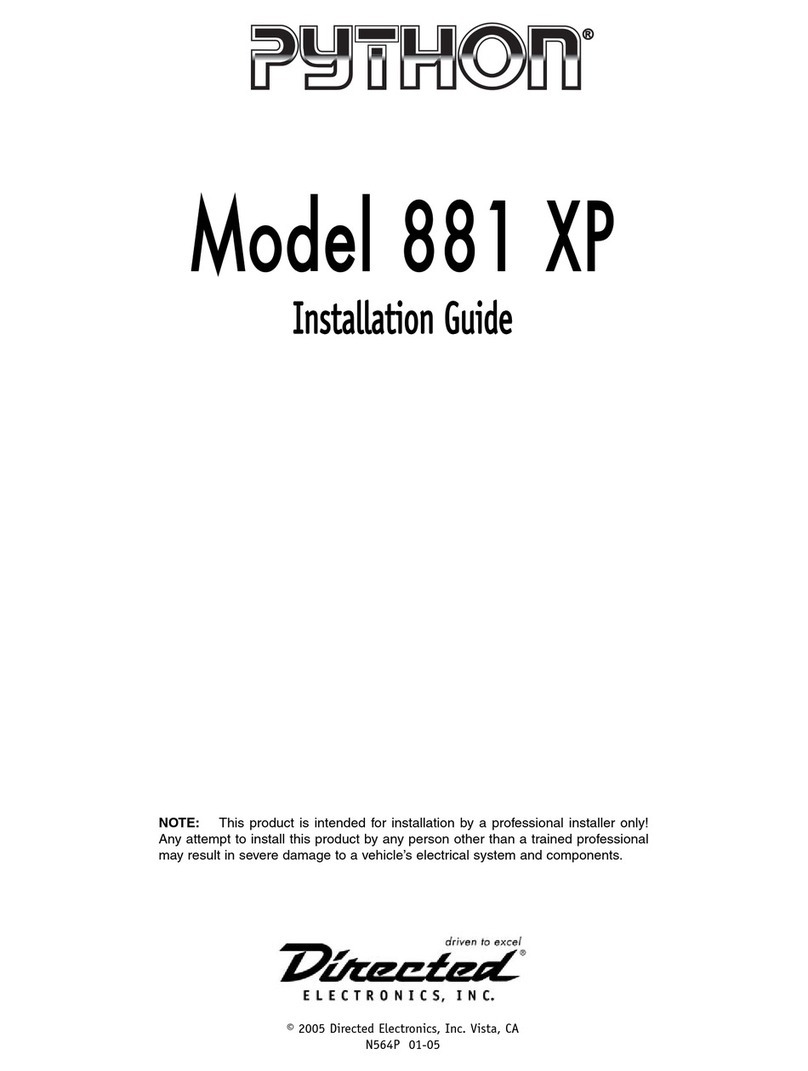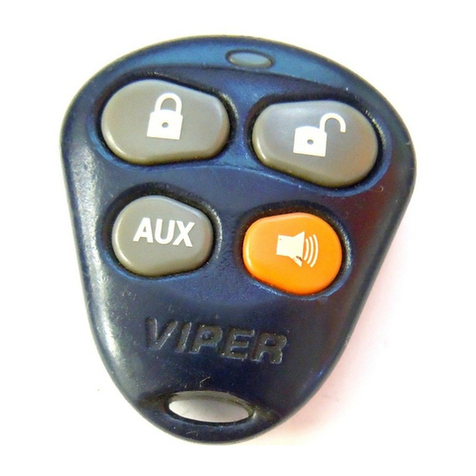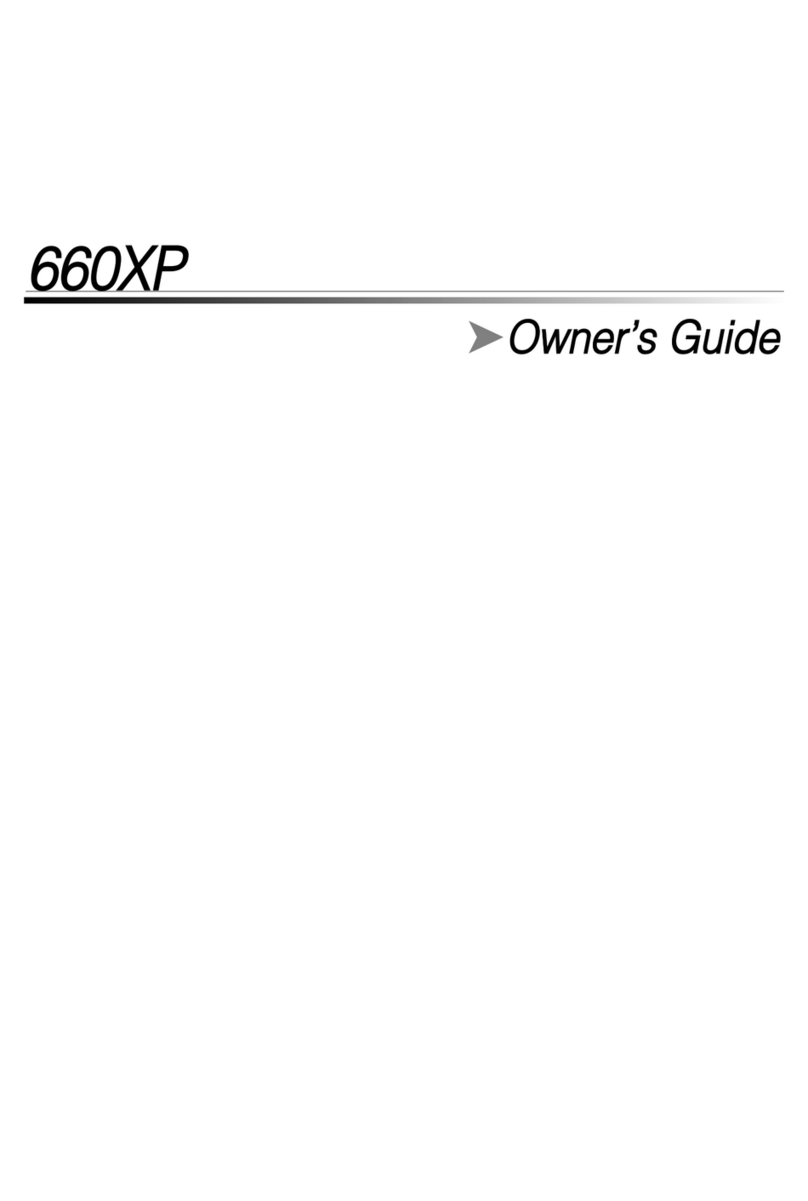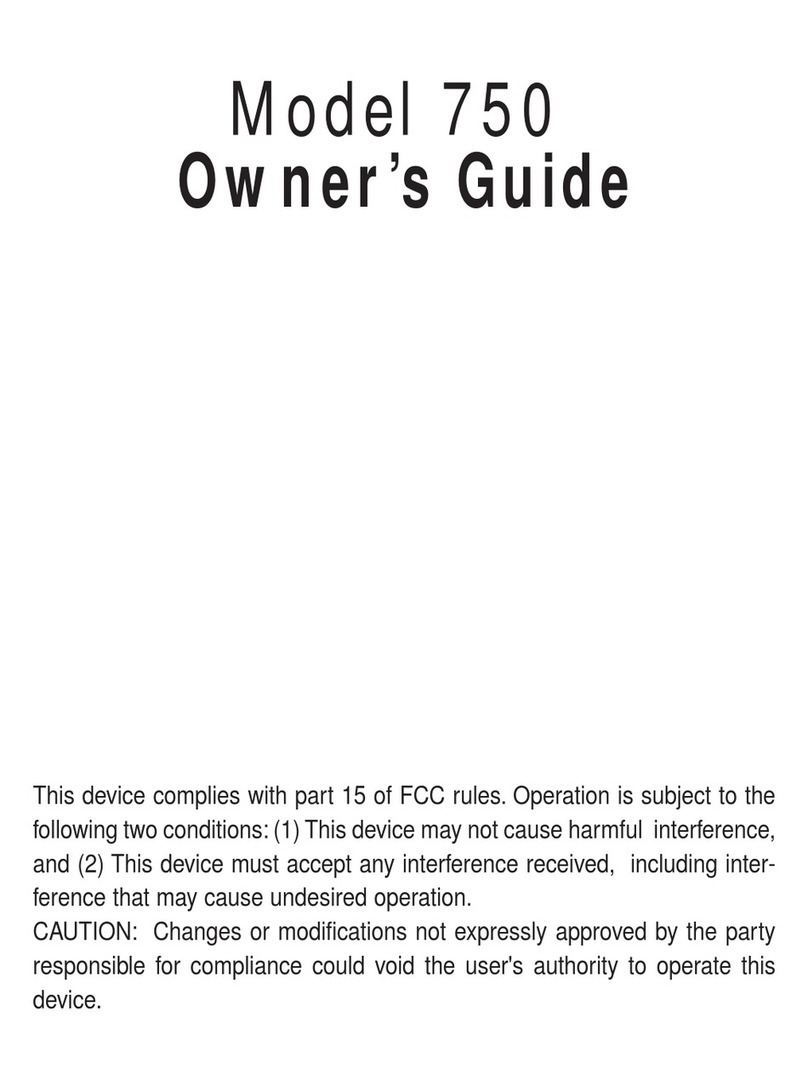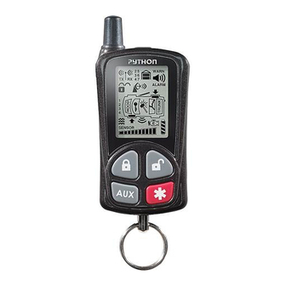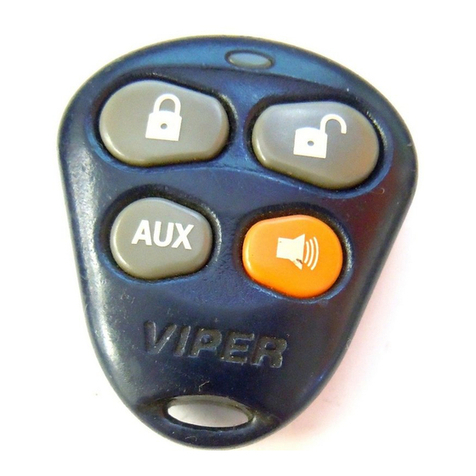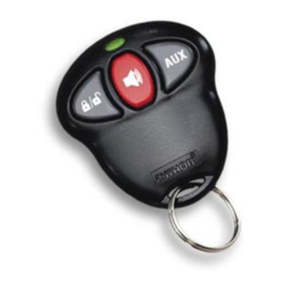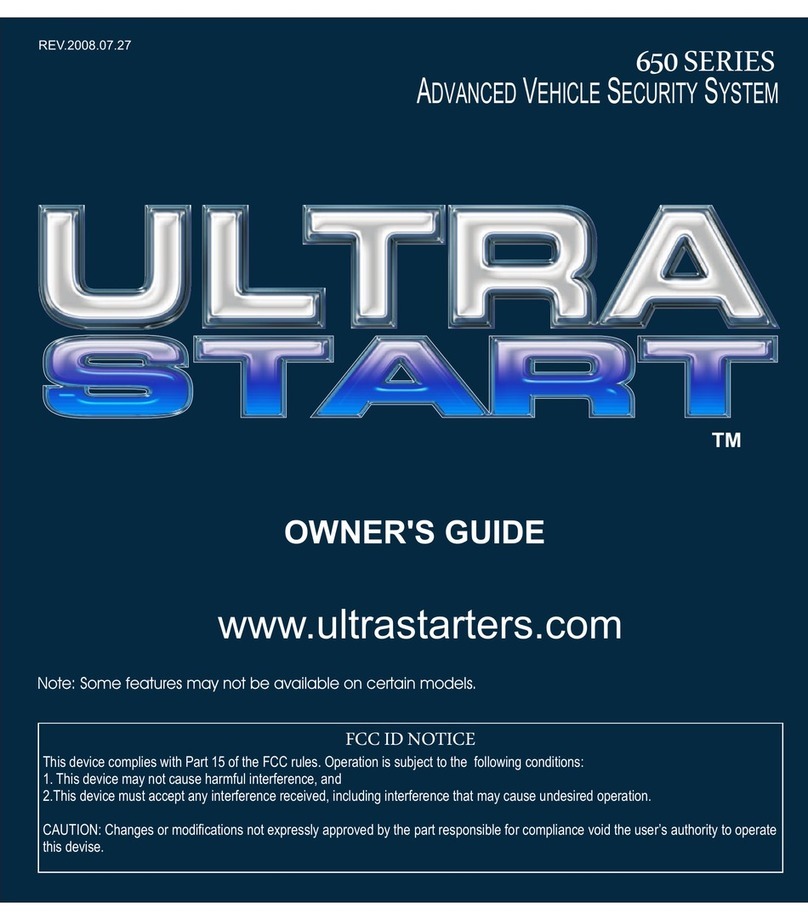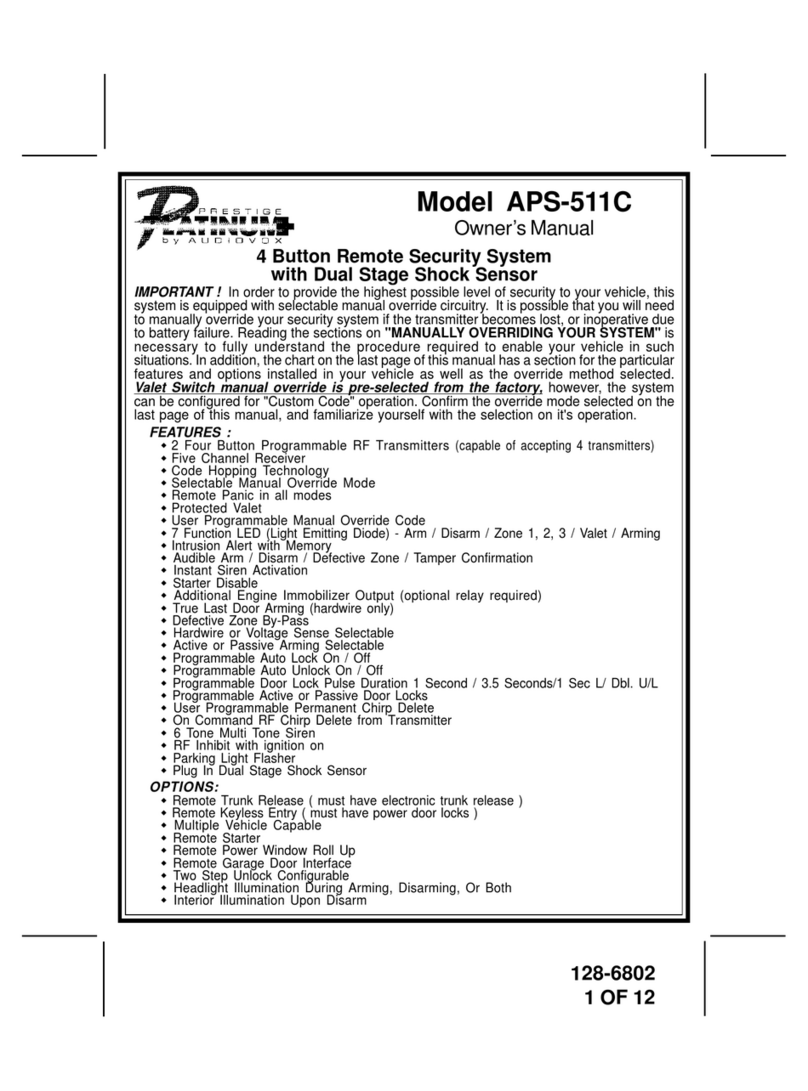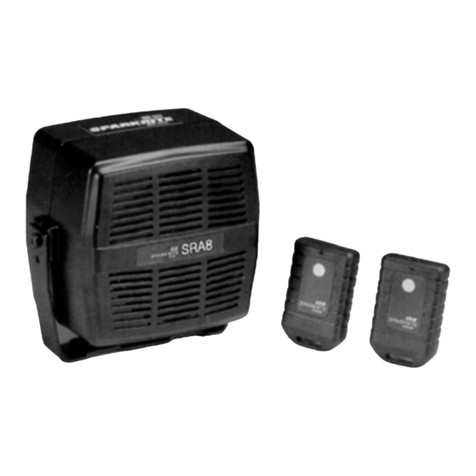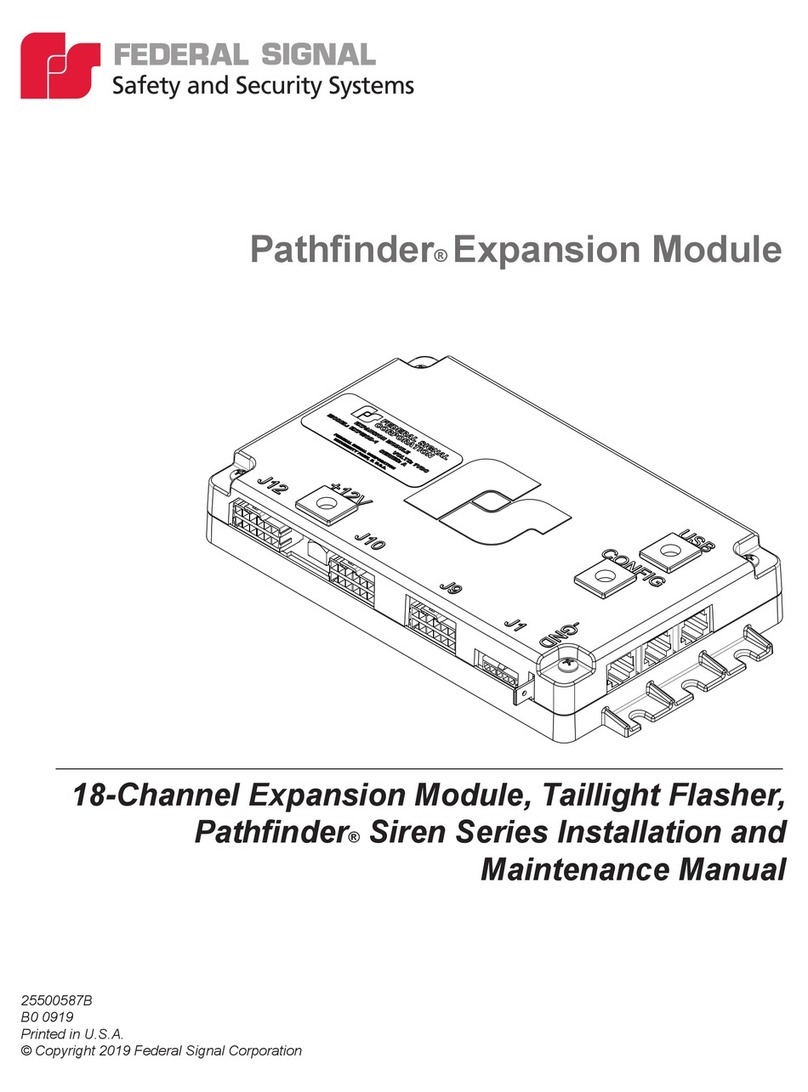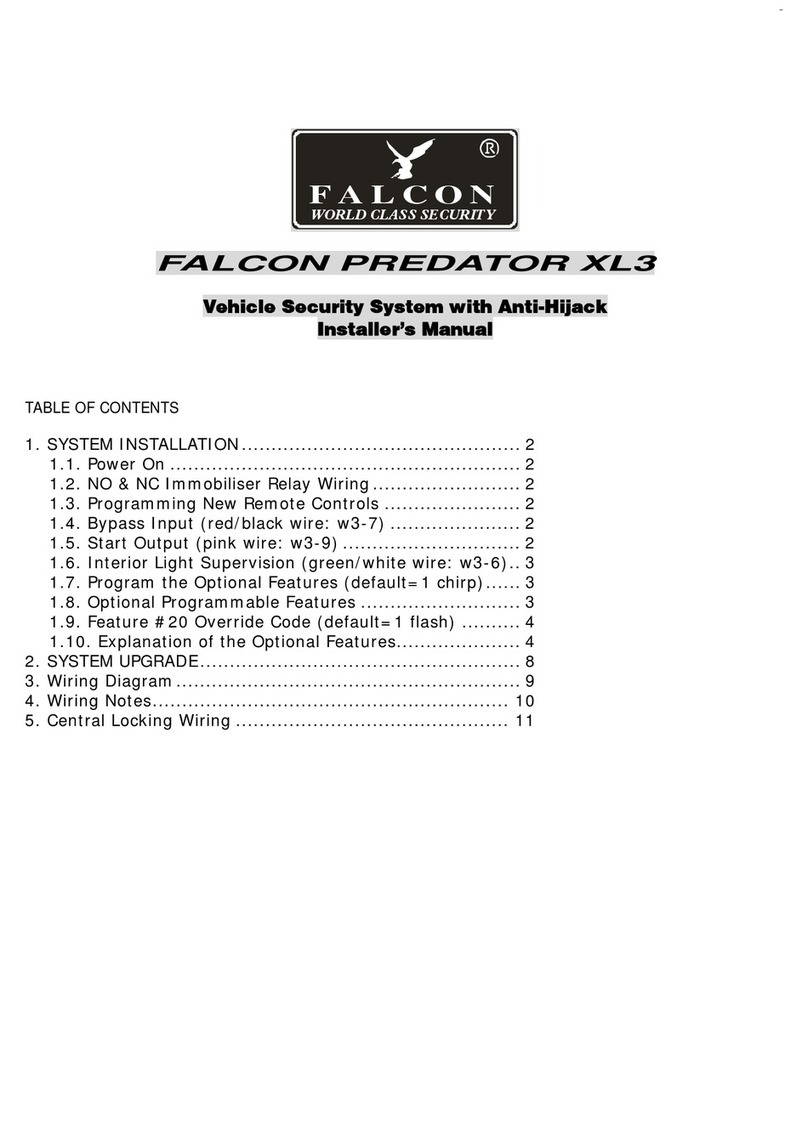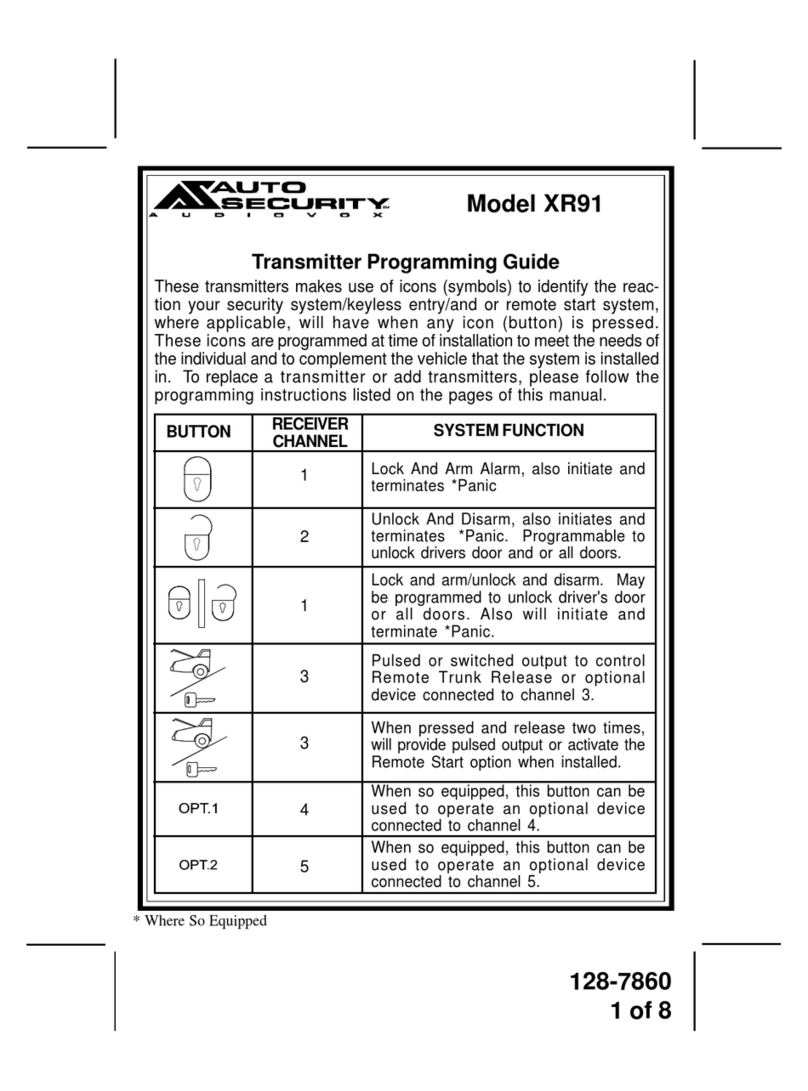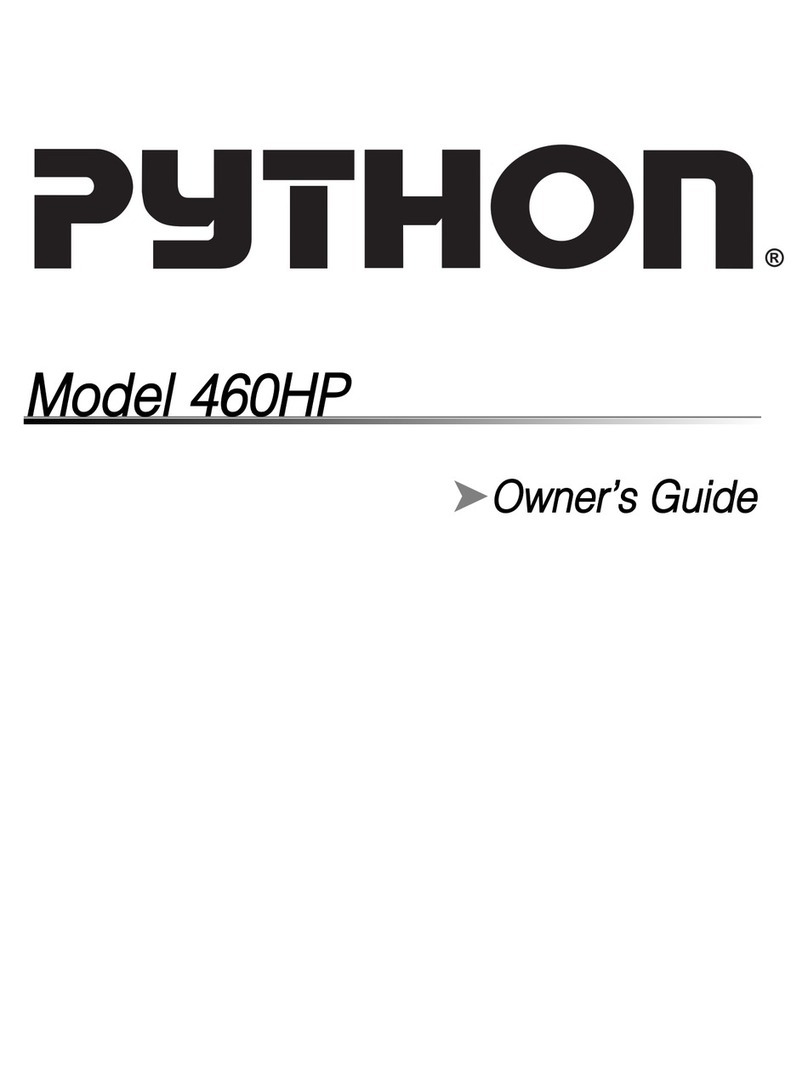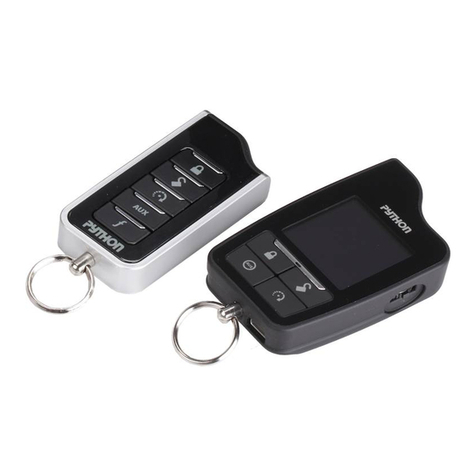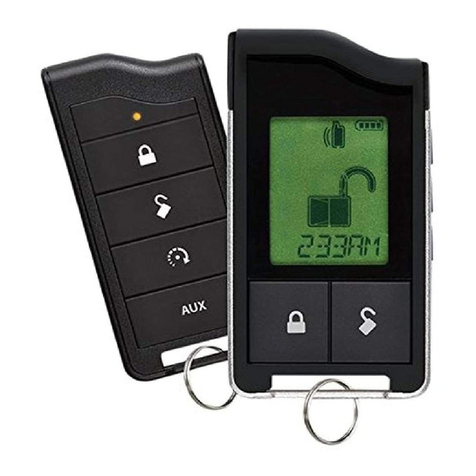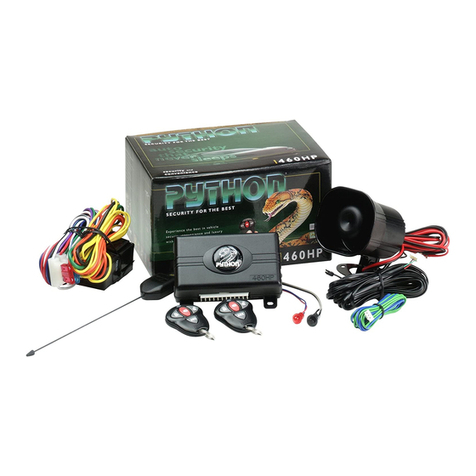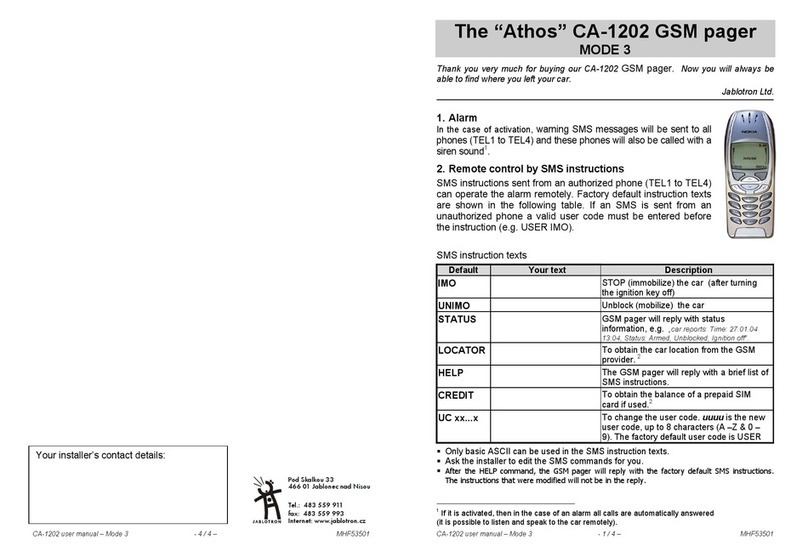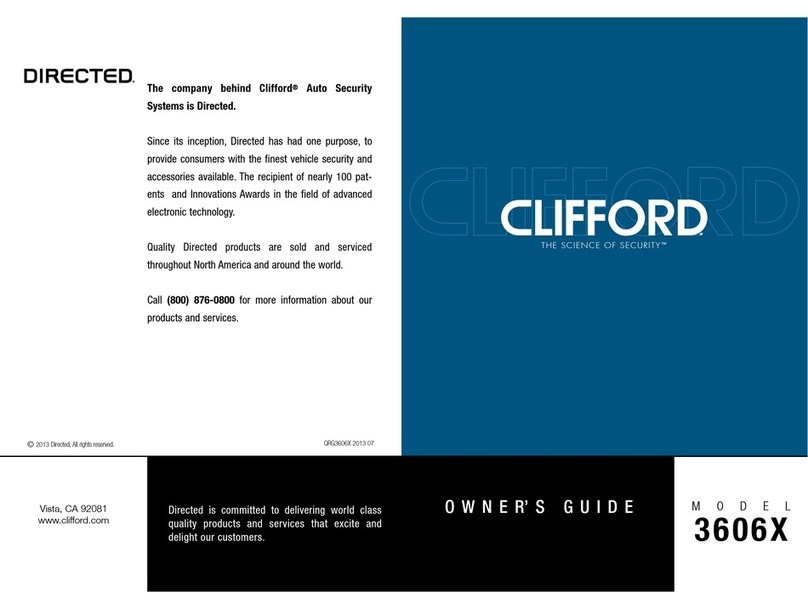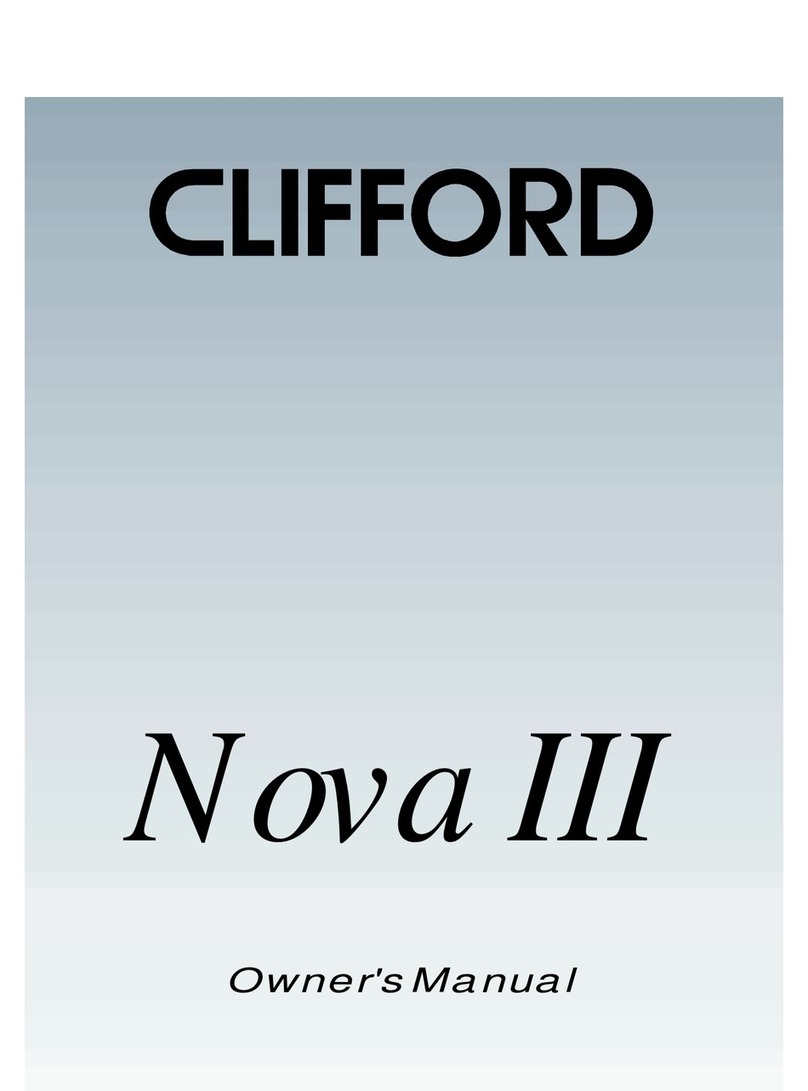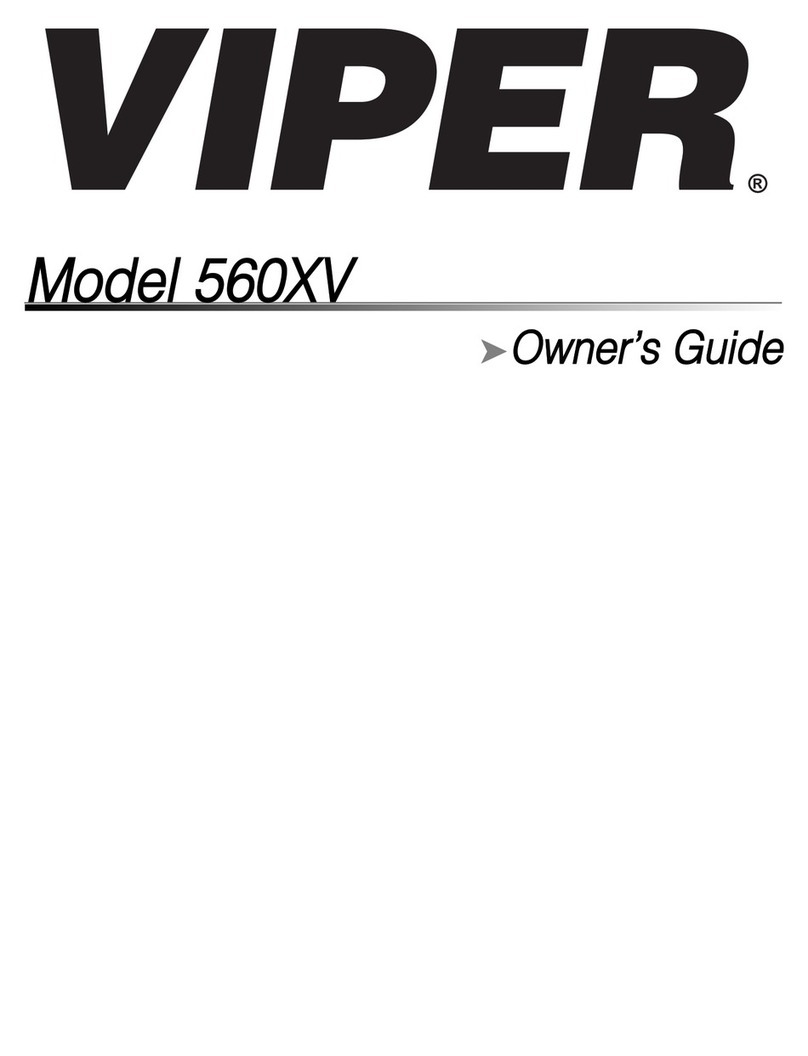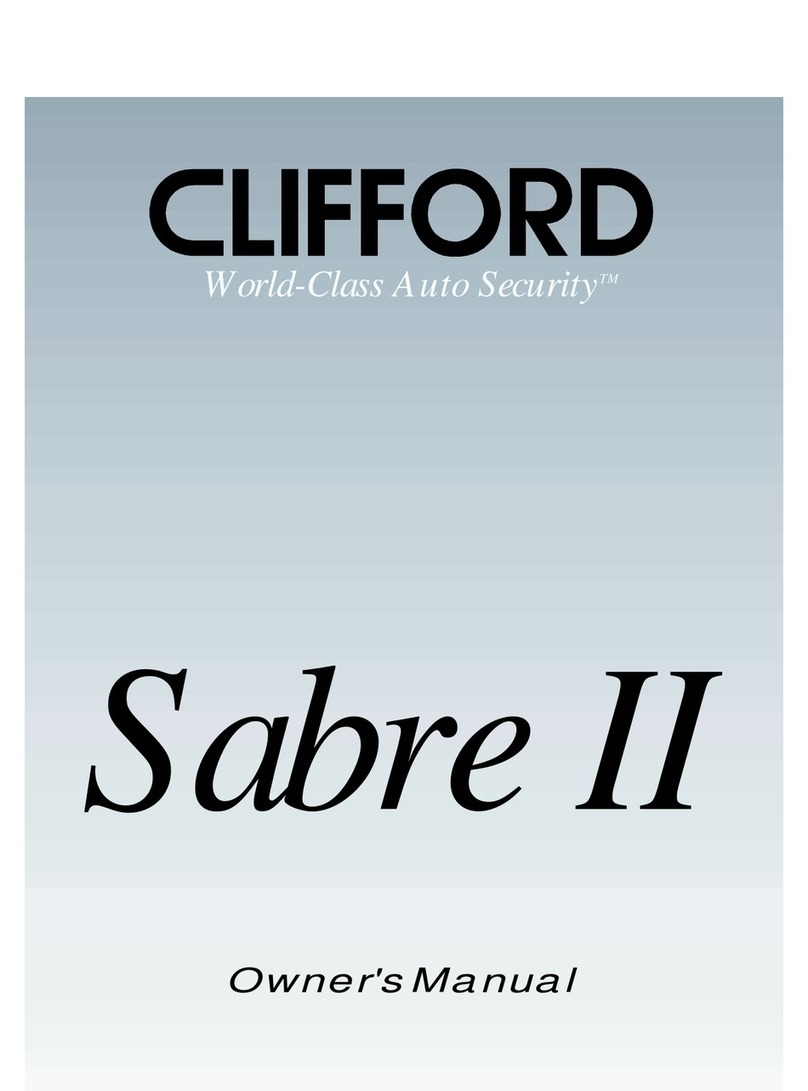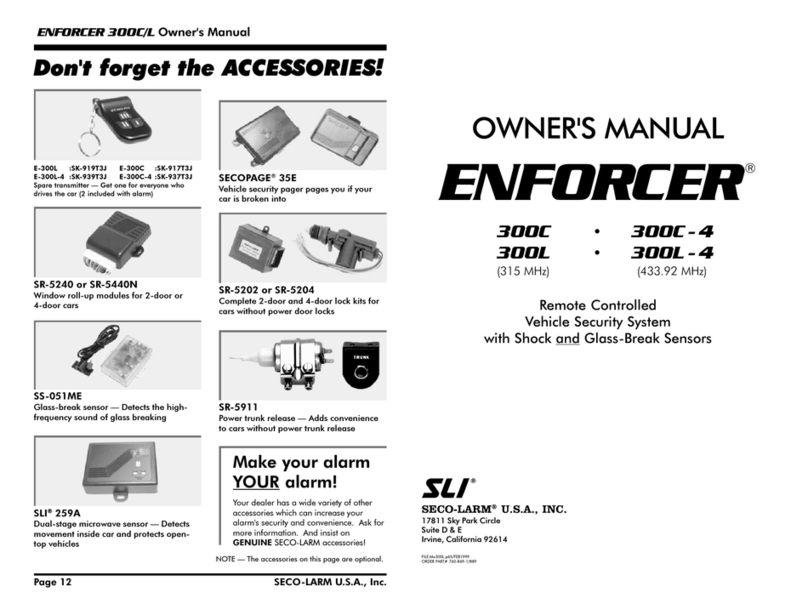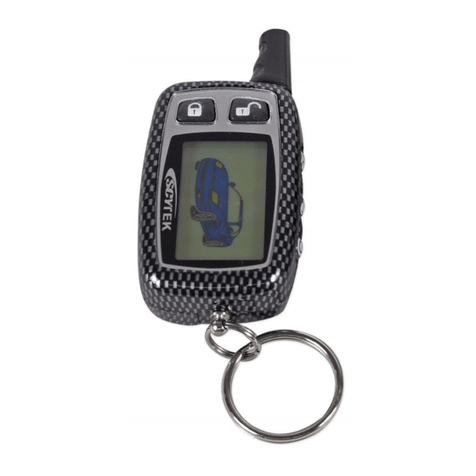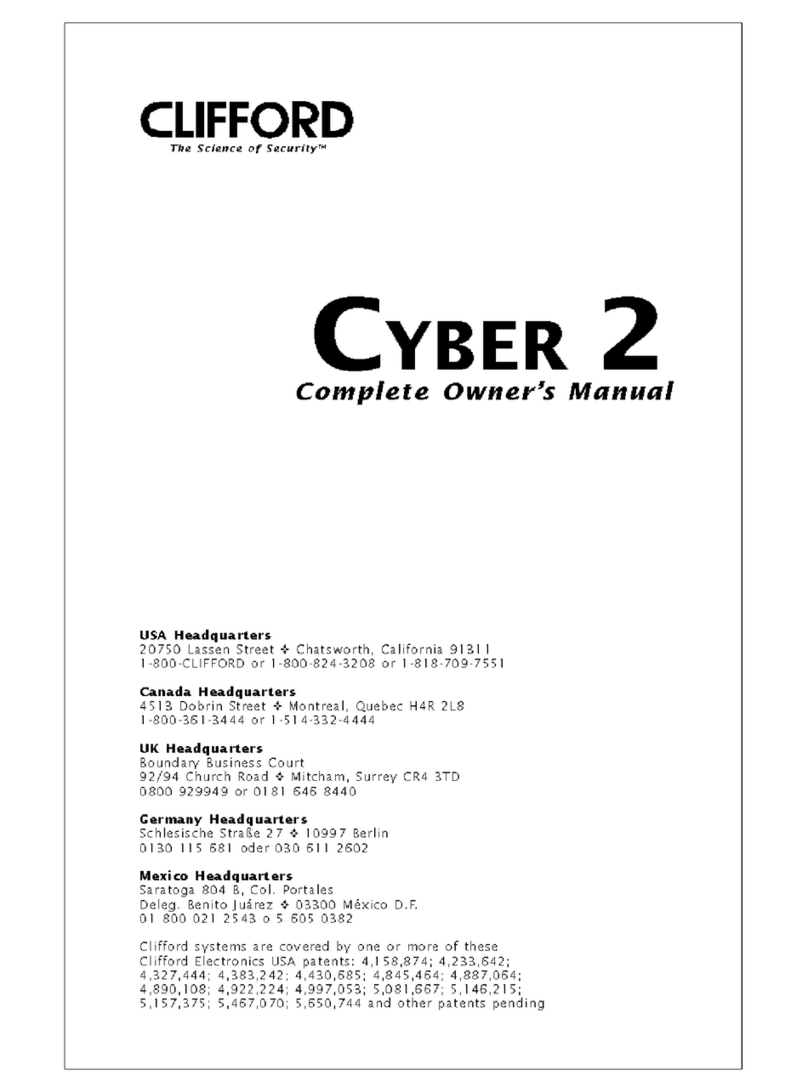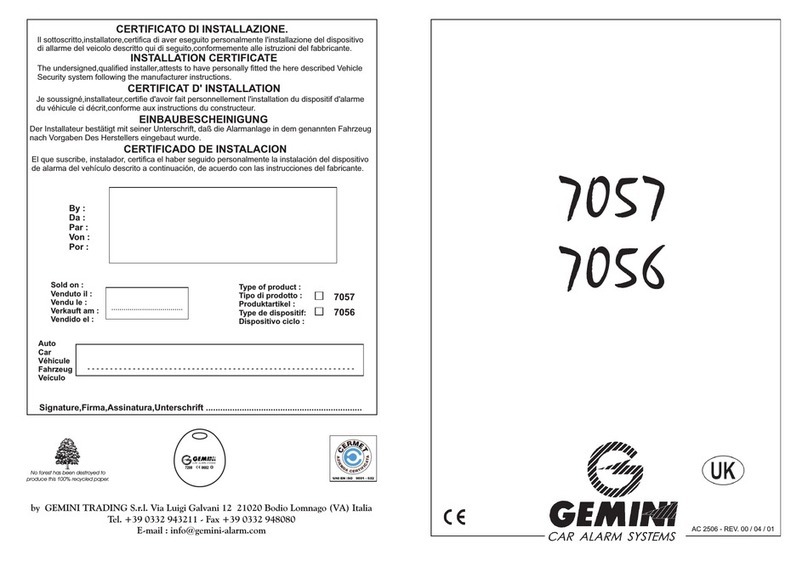22© 2005 Directed Electronics—all rights reserved
ttaabblleeooffccoonntteennttss
Bitwriter®, Code Hopping™, Doubleguard®, ESP™, FailSafe®, Ghost Switch™, Learn
Routine™, Nite-Lite®, Nuisance Prevention® Circuitry, Revenger®, Silent Mode™, Soft
Chirp®, Stinger®, Valet®, Vehicle Recovery System®, VRS®, and Warn Away® are all
Trademarks or Registered Trademarks of Directed Electronics.
wwaarrnniinngg!!ssaaffeettyyffiirrsstt..........................................33
iinnssttaallllaattiioonnppooiinnttssttoorreemmeemmbbeerr....
......................44
before beginning the installation. . . . . . . . . . 4
after the installation . . . . . . . . . . . . . . . . . . 4
ddeecciiddiinnggoonnccoommppoonneennttllooccaattiioonnss........................44
control module . . . . . . . . . . . . . . . . . . . . . . 4
mounting the antenna . . . . . . . . . . . . . . . . . 5
valet/program switch . . . . . . . . . . . . . . . . . . 5
status LED . . . . . . . . . . . . . . . . . . . . . . . . . 6
optional starter kill relay . . . . . . . . . . . . . . . 6
ffiinnddiinnggtthheewwiir
reessyyoouunneeeedd..................................66
obtaining constant 12V . . . . . . . . . . . . . . . . 7
finding the 12V switched ignition wire . . . . . . 7
finding the starter wire . . . . . . . . . . . . . . . . 7
finding a (+) brake light wire . . . . . . . . . . . . 8
finding the accessory/heater wire . . . . . . . . . 8
finding the tachometer wire . . . . . . . . . . . . . 8
finding the wait-to-start bulb wire for diesels . 9
wwiirriinnggddiiaaggrraammss....................................
............99
primary harness (H1) wiring diagram . . . . . . . 9
remote start ribbon harness wiring diagram . . 10
heavy gauge relay satellite wiring diagram . . 11
auxiliary harness (H2) wiring diagram. . . . . . 11
remote start harness (H3) wiring diagram . . . 11
pprriimmaarryyhhaarrnneessss((HH11))wwiirreeccoonnnneeccttiioonngguuiiddee........1122
remote start auxiliary harness wiring diagram 12
door lock harness (H4) wiring diagram . . . . . 12
rreellaayyssaatteelllliitteeiinntteerrffaacceewwiir
reeccoonnnneeccttiioonngguuiiddee....1166
aauuxxiilliiaarryyhhaarrnneessss((HH22))wwiirreeccoonnnneeccttiioonngguuiiddee......1177
rreemmootteessttaarrtthhaarrnneessss(
(HH33))wwiirreeccoonnnneeccttiioonngguuiiddee..1199
nneeuuttrraallssaaffeettyysswwiittcchhiinntteerrffaaccee..........................2200
testing the neutral safety switch . . . . . . . . . 21
11999955aanndd
nneewweerrvveehhiicclleeaannttii--tthheeffttssyysstteemmss..........
((iimmmmoobbiilliizzeerrss)).........................................
.......2233
passlock I and passlock II (PL-1 and PL-2) . . 23
passkey III (PK-3), transponder-based systems23
bbyyppaassssiinnggGGMMvveehhiicclleeaannttii--tthheeffttssyysstteemmss((VVAATTSS))..2244
pplluugg--iinnLLEEDDaannddvvaalleett//pprrooggrraammsswwiittcchh.
...............2255
pprrooggrraammmmeerriinntteerrffaaccee,,33--ppiinnppoorrtt........................2255
pprrooggrraammmmiinnggjjuummppeerrss....
..................................2266
light flash (+)/(-) . . . . . . . . . . . . . . . . . . . 26
tach threshold on/off . . . . . . . . . . . . . . . . . 26
ttrraannssmmiitttteerr//rreecceeiivveerrlleeaarrnnrroouuttiinnee......................2277
ttr
raannssmmiitttteerrccoonnffiigguurraattiioonnss................................2299
button configuration . . . . . . . . . . . . . . . . . 29
ssyysstteemmffeeaattuurreesslleeaarrnnrroouuttiinnee...........
.................3300
ffeeaattuurreemmeennuuss..................................................3322
menu #1. . . . . . . . . . . . . . . . . . . . . . . . . . 32
menu #1. . . . . . . . . . . . . . . . . . . . . . . . . . 33
menu #2. . . . . . . . . . . . . . . . . . . . . . . . . . 33
menu #2. . . . . . . . . . . . . . . . . . . . . . . . . . 35
ttaacchhlleeaarrnniin
ngg..................................................3377
sshhuuttddoowwnnddiiaaggnnoossttiiccss..........................
............3388
rraappiiddrreessuummeellooggiicc............................................3399
rreeaarrddeeffooggggeerrccoonnttrro
oll........................................3399
ttiimmeerrmmooddee..............................................
......4400
vvaalleettmmooddee......................................................4400
ssaaffeettyycchheecckk............
........................................4400
ttrroouubblleesshhoooottiinngg..........................................
....4422
wwiirriinnggqquuiicckkrreeffeerreenncceegguuiiddee..............................4444
rreellaayyssaatteelllliitteewwiirriinnggqquuiicckkrreef
feerreenncceegguuiiddee..........4455
The Bitwriter®(p/n 998T)
requires chip version 202 or
newer to program this unit.

